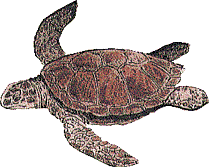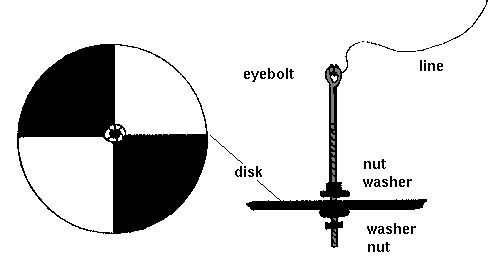
At this station, your team will measure the turbidity, or the amount of
sediment suspended in the water, and learn how turbidity affects aquatic life.
Turbid water might be described as "murky" in appearance; the clearer the
appearance of the water, the lower its turbidity. When turbidity is high, water
loses its ability to support a diversity of aquatic organisms. Solid particles-
such as sediment-suspended in the water can block out light that aquatic
plants and organisms need. Suspended solids can also absorb heat from
sunlight, raising the temperature of the water. As the water becomes warmer,
it loses its ability to hold oxygen. This causes dissolved oxygen levels to drop,
further reducing the number of plants and animals that can live in the water.
You will use a Secchi disk to measure turbidity. A Secchi disk is a scientific
tool for measuring the relative clarity of deep water. The clearer the water, the
lower the turbidity. The murkier the water, the higher the turbidity.
Materials
For the Pre-Field station:
- Plastic lid, white or light-colored, 20 cm (about 8 in) in diameter
- One black waterproof marker
- Several meters of fishing line
- Flagging tape or strips of colored ribbon
- Meter stick
- Eyebolt with 2 nuts and washers
- Several sharpened pencils
For the Field Experiment:
- Secchi disk (constructed from the above materials)
- Your team's copy of Master 4a, "Baseline Study and Possible Human Impact
Assessment Form"
Methods
Pre-Field Experiment:
Before you can measure the turbidity of the water at your aquatic site, you
need to construct a Secchi disk. (If the Secchi disk has already been constructed
by another team, examine the disk. Then go to Step 6 and read how the Secchi
disk will be used in the field.)

- Use a sharpened pencil to punch a hole in the center of the plastic lid.
- Use your waterproof marker to divide the top (outside) of the lid into four
pie-shaped pieces of equal size (see illustration). Color the upper left and
lower right sections black.
- Thread a nut and washer (in that order) onto the eyebolt.
- With the nut and washer on the eyebolt, insert the eyebolt through the
hole in the center of the lid. Then add the other washer and nut (in that
order) to the eyebolt on the underside of the lid (see illustration).
- Tie one end of the fishing line to the eye of the eyebolt.
- Using the meter stick, measure out from the eyebolt 250 centimeters (about
10 in) along the line, and tightly tie a ribbon around the line. Continue
tying ribbons to the line every 250 centimeters. In the field, you will lower
the Secchi disk into the water. As soon as you can no longer see it, you will
stop and count the number of ribbons to determine the turbidity level.
Field Experiment
- If possible, stand on a bridge over the water at your aquatic site. If there is
no bridge, simply conduct this Experiment from the bank. Lower the Secchi
disk into the water just to the point where you can no longer see it.
- When you can no longer see the Secchi disk, count the number of ribbons
remaining above the surface of the water. Subtract this number from the
total number of ribbons on the line to calculate the number of ribbons
submerged with the disk. This is your turbidity reading.
Example: Suppose you count 10 ribbons above the water at the time you
can no longer see your Secchi disk. If your fishing line has a total of 15
ribbons, you would subtract 10 from 15, and your turbidity reading would
be 5.
If your Secchi disk reaches the bottom and you can still see it, you should
still record the number of ribbons submerged with the disk. If you are still
able to see the disk after it has reached the bottom, what do you think it
means?
- Repeat the Experiment one or two times. Record the turbidity each time. To
get an average of your readings, add the turbidity readings and divide by the
number of times you did the Experiment.
Conclusions
After you have conducted both the Pre-Field and Field Experiments, discuss
the following questions within your research team and record your answers
in your JASON Journal.
- What do your turbidity readings suggest to you about the water at your site?
- What new questions do you have?
- Look for more answers to your questions in the JASON Online Systems,
the library, and science textbooks.

Return to the Aquatic Field Investigation
JASON VII Home Page


JASON Project Homepage ||
Teachers' Guide ||
Students' Corner ||
Search
Gene Carl Feldman
(gene@seawifs.gsfc.nasa.gov)
(301) 286-9428
Todd Carlo Viola, JASON Foundation for Education (todd@jason.org)
Revised: 3 Nov 1995


![]()
![]()